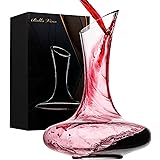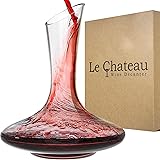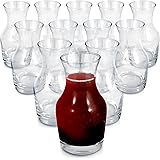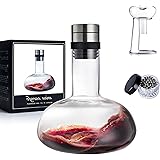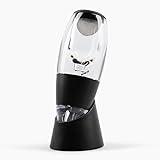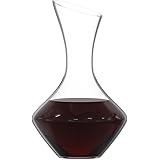The pursuit of gastronomic excellence often involves intricate pairings. Optimal wine selection significantly enhances high-value ingredients. For instance, the global truffle market is valued at billions, with connoisseurs consistently seeking perfection in its presentation. The accompanying video offers an insightful starting point on this delicate subject. Here, we delve deeper into the nuanced world of truffle wine pairing, expanding on the video’s expert recommendations and exploring the scientific underpinnings of these harmonious matches.
Understanding Truffle-Wine Synergy: Beyond the Basics
Achieving a sublime truffle wine pairing requires specific knowledge. The fundamental principle, as discussed, is often summarized: “What grows together, goes together.” This concept is rooted in shared regional characteristics. Soil composition and climatic conditions impact both truffles and grapes. Thus, many regional food and wine traditions are formed. These pairings often share similar aromatic compounds. This creates a natural resonance on the palate. Such traditional wisdom is deeply valued in culinary arts.
Truffles, particularly varieties like the esteemed Alba white truffle or the potent Périgord black truffle, boast complex aromatic profiles. These profiles are dominated by various volatile organic compounds. Such compounds include dimethyl sulfide, bis(methylthio)methane, and various aldehydes. Each compound contributes to the truffle’s distinct earthy, musky, or gassy notes. The chosen wine must complement, not overpower, these delicate nuances. Acidity, tannin, and aromatic intensity are key wine characteristics. These elements must be balanced for success. Wine structure plays a critical role in the overall sensory experience.
1. Deep Dive: Italian Red Wines for Truffles
The video identifies Barolo and Barbaresco as prime choices. These wines originate from Piedmont, Italy. This region is also a prominent source of white truffles. The synergy is thus immediately apparent. Both Barolo and Barbaresco are crafted from the Nebbiolo grape. This grape is renowned for its robust tannins and high acidity. Furthermore, Nebbiolo wines develop profound earthy and tarry notes with age. These characteristics align perfectly with truffle aromatics. A well-aged Barolo often exhibits subtle notes of dried roses, licorice, and forest floor. These complex secondary and tertiary aromas are paramount. They beautifully echo the multifaceted aroma profile of truffles. The wine’s bold flavor profile stands up to rich truffle dishes. This includes truffle pasta or truffle-shaved meats. This choice is consistently favored by sommeliers for its proven effectiveness.
Specific vintage selection is critical here. Younger Barolo or Barbaresco, under five years, may be too tannic. Their primary fruit notes might also clash. Optimal enjoyment is often achieved with wines having 8-15 years of bottle age. This allows the tannins to soften considerably. Tertiary aromas like tobacco, leather, and truffle-like notes develop. These are known to enhance the overall experience. The phenolic compounds in Nebbiolo mature gracefully. Their interaction with truffle compounds creates a remarkable depth. This pairing exemplifies the “terroir” principle. Regional ingredients find their perfect match. The robust structure of these wines provides an ideal counterpoint. They enhance the truffle’s intensity without overshadowing it. Considerations are often given to the dish’s fat content. This influences the wine’s perceived tannin structure.
2. Nuance in Pairing: The Art of Pinot Noir with Truffles
For those preferring a lighter red wine, Pinot Noir is recommended. Specifically, an aged Pinot Noir from Burgundy is advised. The video suggests a particular vintage window: within five to ten years. This timeframe is crucial for preserving its “fruit phase.” Pinot Noir offers delicate fruit flavors. Cherry, raspberry, and mushroom notes are often present. Its lighter body and lower tannin structure are appealing. These qualities make it a versatile pairing option. The wine’s inherent earthiness often complements truffles. Especially for dishes where truffle is a subtle accent. Burgundy Pinot Noir is celebrated for its elegance and complexity. It often showcases a refined balance of acidity and fruit. This contrasts with the boldness of Nebbiolo. This makes it a preferred alternative for many palates.
The aging recommendation warrants further discussion. While some might prefer older vintages, the goal here is fruit preservation. After ten years, many Pinot Noirs transition significantly. More savory and dried fruit notes emerge. The vibrant freshness can diminish. However, well-made Burgundian Pinot Noir can certainly age beyond a decade. It can develop profound forest floor and game notes. This might also pair exquisitely with truffles. The specific “fruit phase” mentioned highlights a preference. It suggests a balance between youthful vibrancy and emerging complexity. Winemaking techniques, such as oak aging, also impact the wine’s profile. These factors influence the optimal truffle wine pairing. The wine’s aromatic contribution must be considered carefully. Its delicate structure is paramount.
3. The Unexpected Match: Aged Champagne and Truffles
The video astutely highlights aged Champagne as an excellent pairing. This choice might surprise some red wine traditionalists. However, the logic behind it is compelling. Aged Champagnes develop complex autolytic characteristics. These include brioche, toast, and yeasty aromas. These notes arise from extended contact with lees (spent yeast cells). Such profiles mirror the earthy, sometimes savory, attributes of truffles. Furthermore, the effervescence of Champagne acts as a palate cleanser. The bubbles cut through rich truffle dishes. This refreshing quality maintains palate freshness. The high acidity also provides excellent contrast. This creates a dynamic and sophisticated experience. The creamy texture of aged Champagne adds another layer of complexity. This contributes to a luxurious mouthfeel. This pairing is often considered a sophisticated choice for gourmands.
The selection of an aged Champagne is paramount. Young, fruit-forward Champagnes lack the necessary depth. Their primary fruit and citrus notes may clash. A minimum of five to seven years on lees is generally preferred. Some prestige cuvées are aged for ten years or more. These longer aging periods allow tertiary aromas to fully develop. Disgorgement date should also be considered. Longer post-disgorgement aging in bottle further enhances complexity. These factors contribute significantly to the wine’s ability to pair with truffles. Vintage Champagne or specific blanc de blancs styles may offer particular advantages. Their inherent elegance and structural integrity are ideal. This unexpected truffle wine pairing showcases exceptional versatility.
Understanding Truffle Volatile Compounds and Wine Chemistry
The science of truffle wine pairing is deeply rooted in flavor chemistry. Truffles contain numerous volatile organic compounds. These compounds contribute to their distinctive aromas. Key among these are sulfur compounds and aldehydes. Dimethyl sulfide (DMS) contributes to earthy and savory notes. Its presence is significant in both truffles and certain wines. Pyrazines, though less prominent in truffles, can be found in some wines. These contribute bell pepper or earthy nuances. The interaction of these compounds with wine aromatics is crucial. Wines containing similar or complementary volatile compounds are often successful. This creates a harmonious flavor bridge. Phenolic compounds in red wines, like tannins, also play a role. They can bind with proteins in food. This affects mouthfeel and perceived richness. The right wine structure ensures optimal sensory experience. Acidity levels are also critical in balancing richness.
Research into food and wine pairing continues to evolve. Studies often focus on specific compound interactions. For example, some studies explore umami compounds in truffles. These compounds can enhance the savory notes in certain wines. The concept of cross-modal perception is also relevant. Visual, tactile, and aromatic cues influence perception. The perceived sweetness or bitterness of wine changes. This depends on the food it is paired with. The wine’s alcohol content can also impact flavor release. Higher alcohol can enhance certain aromatics. However, it can also lead to an alcoholic burn. Careful consideration of these chemical interactions is vital. It elevates the truffle wine pairing beyond simple preference. This scientific approach provides a deeper understanding. It allows for more precise and effective pairings. Expert knowledge of these elements greatly benefits the discerning palate.
Optimizing Your Truffle Experience: Practical Considerations
Several practical factors should be considered for optimal truffle wine pairing. Firstly, the truffle’s preparation method is paramount. Raw truffles shaved over a dish require delicate wines. Cooked truffles, integrated into sauces, demand more robust options. The richness of the accompanying ingredients also dictates choice. A truffle risotto, for example, is inherently creamy. It may necessitate a wine with higher acidity. This cuts through the richness effectively. Secondly, serving temperature of the wine is crucial. Red wines, like Barolo, are best served around 18°C. This allows their complex aromas to emerge. Champagne should be served chilled, around 8-10°C. This preserves its effervescence and crispness. These precise temperatures enhance the overall sensory profile. Careful attention to detail is truly rewarded.
Thirdly, personal preference remains a significant factor. While expert recommendations offer guidance, individual tastes vary. Some may prefer bold contrasts, others subtle harmonies. Experimentation within recommended categories is encouraged. This allows for discovery of personal favorites. Finally, the context of the dining experience matters. A celebratory meal might call for a prestige Champagne. A rustic truffle pasta might favor a more humble but well-matched Pinot Noir. Understanding these nuances elevates the truffle wine pairing experience. It transforms a meal into a truly memorable event. The investment in high-quality truffles deserves an equally thoughtful wine selection. This ensures maximum enjoyment of the prized fungi.


